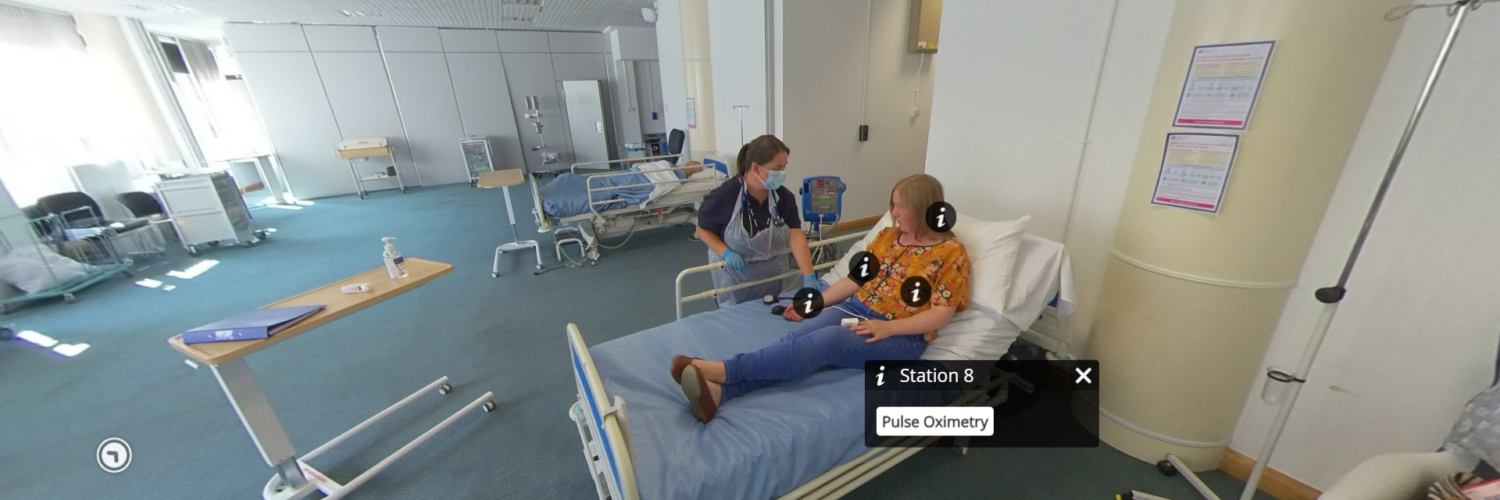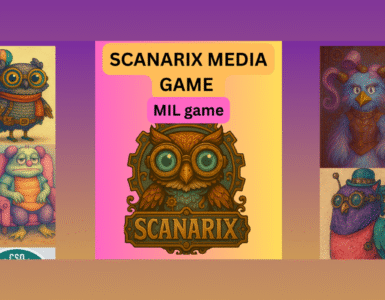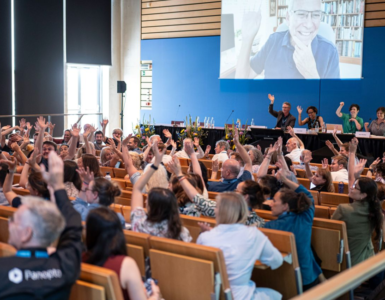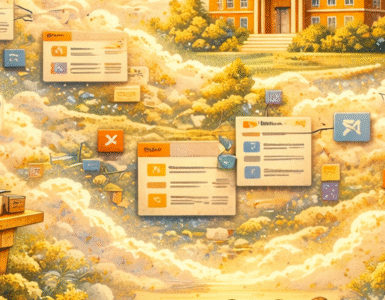by Martin Nosek, Swansea University, UK.
Multimedia has become an essential part of education, with one particular form – 360° images – gaining popularity recently due to technological advancements, affordability, and accessibility. This reality-capturing technique provides an immersive, omnidirectional view, offering a sense of presence in the environment. Using 360° static images in education offers several advantages, especially in fields requiring hands-on learning. One major benefit is the ability to replicate real-world settings without needing physical presence. This is particularly useful in disciplines like healthcare, architecture, and engineering, where spatial awareness and context are crucial. Unlike traditional 2D resources, 360° images allow students to explore environments from multiple angles, enriching their learning experience.
Healthcare Education
In healthcare, 360° learning environments, enhanced with interactive elements like hotspots, encourage active learning by integrating critical thinking and problem-solving exercises. The accessibility of these web-based environments is another advantage – they can be accessed remotely, on any device, making them ideal for distance learning or situations like the COVID-19 pandemic, where physical access is limited.
During the pandemic, healthcare students at Swansea University faced restricted access to clinical skills practice, vital for nurses, paramedics, and other healthcare professionals. In response, and in collaboration with subject experts, I developed several web-based 360° learning environments. These environments tackle various challenges healthcare students face, providing a ‘close to real-life’ learning experience. Available through Swansea University’s Virtual Learning Environment, these flipped learning resources are part of the self-directed study.
Design and examples of use
The design and development of 360° learning environments is a key to success and to the sustainability over a time. Initial discussion involves checking the learning objectives, the visual space the learning will take place and size of cohort. Usually, I use an ABC learning design approach covering various learning types, so students can actively gain the new skills completing the resource (in some cases story) in the 360° environment leading them to the certificate of completion prior their practice exam or a successful authentic assessment at the end of the resource. It is also important to set the scene before entering the environment itself. Short screencasts provides better learning experience once entering the environment.
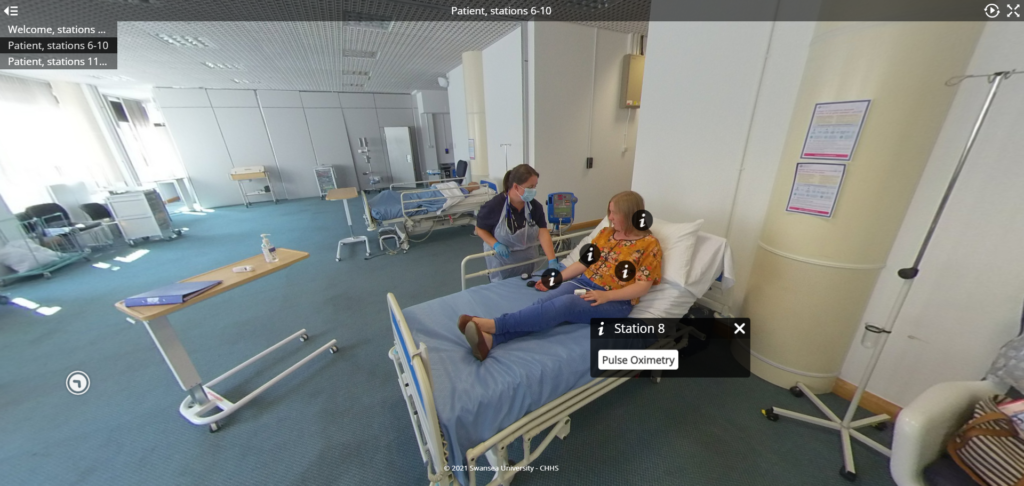
Figure 1 Patient assessment 360° virtual learning environment
One of the very successful examples is a Recognising the sick patient resource which focuses on nursing clinical skills and patient assessment using the National Early Warning Score (NEWS) chart. With real-world 360° images of clinical practice exam settings, interactive stations (hotspots), and patient simulations (images, video), students are guided through the process of patient assessment and documentation. The content and interactive elements are integrated by using Xerte object within each station to deliver the content and interactivity. The resource is finished by filling out a NEWS chart of a fictive patient Caitlin.
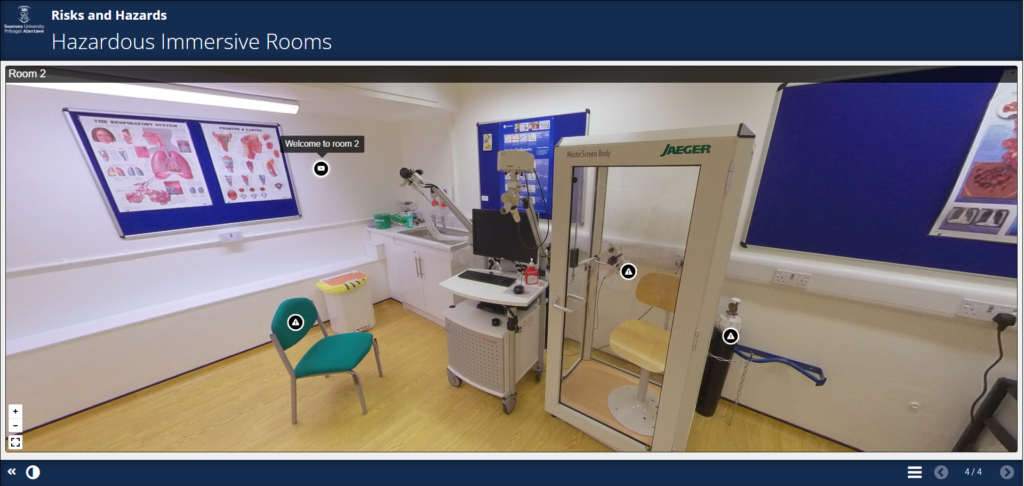
Figure 2 Risks and hazards assessment virtual 360° learning environment
The second and most recent example encompass Risk and hazards assessment in clinical settings and is fully created in Xerte (360° page type). Students are gradually visiting 3 different rooms starting with all information and context given and ending up in a room where it’s their task to spot/identify hazards and write down how to mitigate them. This resource has a gamification element in finding clues throughout the exploration to get a passcode to the next room. Completion of this resource is optional before entering the practical exam.
Student & lecturers feedback
Student feedback is collected by completing a form and attending a synchronous online debrief session focusing on completion of the resource and has been overwhelmingly positive.
Within the Patient Assessment students appreciated a close to real exam setting environment that decreased level of anxiety and the storytelling part of a student nurse Caitlin. Overall, the students performed better in practical exam in comparison to previous cohorts.
The gamification in the second example was challenging, leading to some frustration, but students still valued the experience, noting how much they learned.
There are significant benefits in using 360° environments for staff too. In particular, saving their time by reducing workload of preparing the rooms/clinical settings, marking and providing feedback.
Next steps – Expanding 360° Learning
The success of 360° learning environments has demonstrated their ability to enhance student engagement and understanding. Our next stage is integrating 360° video to create more dynamic, real-life scenarios. Additionally, we’re planning to replicate these environments in our new Simulation Centre, using immersive wall installations to foster interdisciplinary learning. This will blend digital and physical experiences, taking student learning to new level. In my opinion, 360° environments are ready to evolve into complex, fully immersive tools, serving as a bridge to the future of virtual learning in education.

Author
Martin works as an online learning officer at Faculty of Medicine, Health and Life Science at Swansea University. One of his main interests is a student-centred learning and active learning approach in online environment. Martin has developed a couple of Immersive 360° learning environments as an innovative learning space for healthcare students. He is also exploring new ways of simulated learning experience using Virtual Reality and Immersive Walls. You can contact Martin at: martin.nosek@swansea.ac.uk

